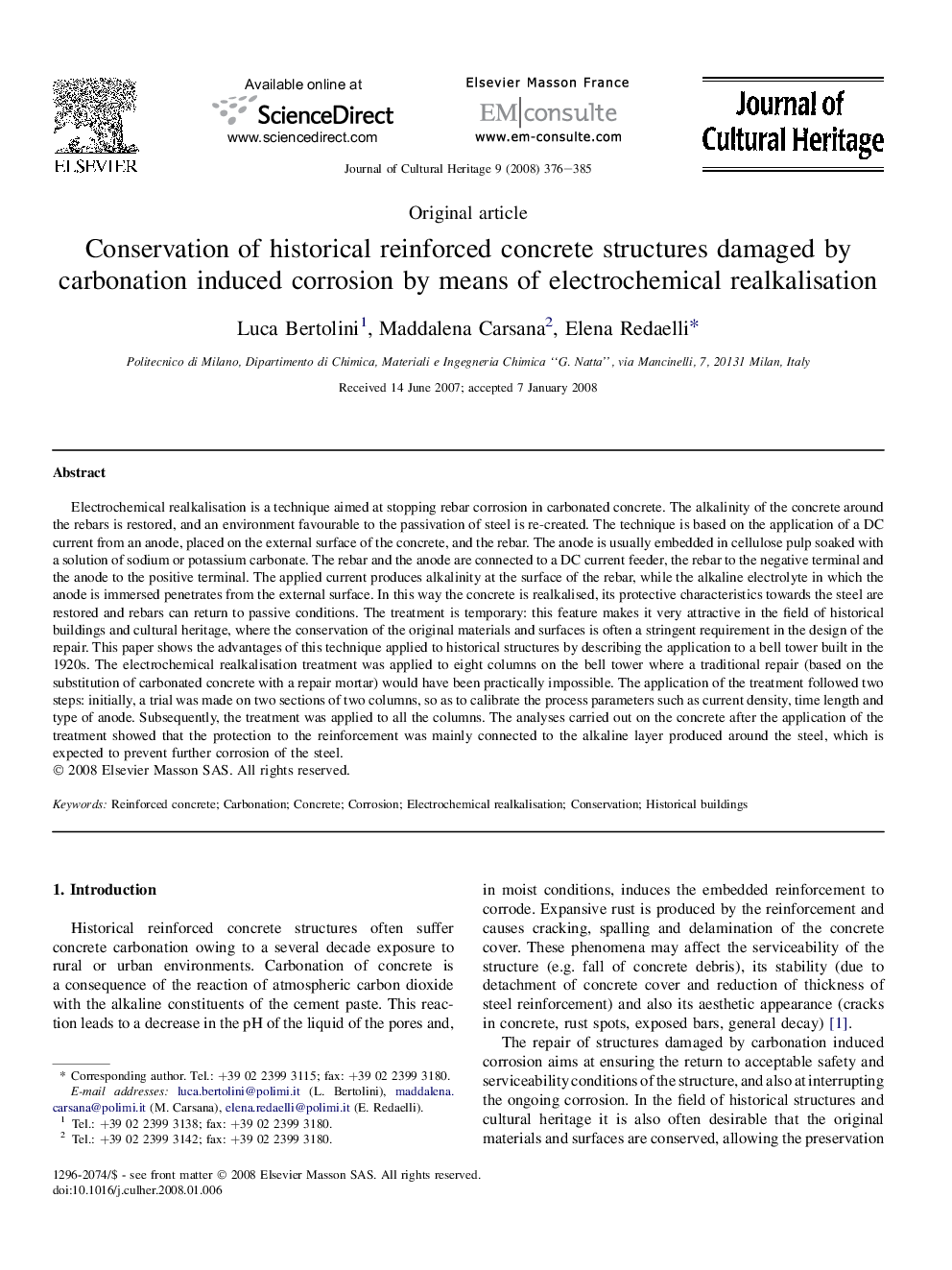| کد مقاله | کد نشریه | سال انتشار | مقاله انگلیسی | نسخه تمام متن |
|---|---|---|---|---|
| 1038620 | 944229 | 2008 | 10 صفحه PDF | دانلود رایگان |

Electrochemical realkalisation is a technique aimed at stopping rebar corrosion in carbonated concrete. The alkalinity of the concrete around the rebars is restored, and an environment favourable to the passivation of steel is re-created. The technique is based on the application of a DC current from an anode, placed on the external surface of the concrete, and the rebar. The anode is usually embedded in cellulose pulp soaked with a solution of sodium or potassium carbonate. The rebar and the anode are connected to a DC current feeder, the rebar to the negative terminal and the anode to the positive terminal. The applied current produces alkalinity at the surface of the rebar, while the alkaline electrolyte in which the anode is immersed penetrates from the external surface. In this way the concrete is realkalised, its protective characteristics towards the steel are restored and rebars can return to passive conditions. The treatment is temporary: this feature makes it very attractive in the field of historical buildings and cultural heritage, where the conservation of the original materials and surfaces is often a stringent requirement in the design of the repair. This paper shows the advantages of this technique applied to historical structures by describing the application to a bell tower built in the 1920s. The electrochemical realkalisation treatment was applied to eight columns on the bell tower where a traditional repair (based on the substitution of carbonated concrete with a repair mortar) would have been practically impossible. The application of the treatment followed two steps: initially, a trial was made on two sections of two columns, so as to calibrate the process parameters such as current density, time length and type of anode. Subsequently, the treatment was applied to all the columns. The analyses carried out on the concrete after the application of the treatment showed that the protection to the reinforcement was mainly connected to the alkaline layer produced around the steel, which is expected to prevent further corrosion of the steel.
Journal: Journal of Cultural Heritage - Volume 9, Issue 4, September–December 2008, Pages 376–385